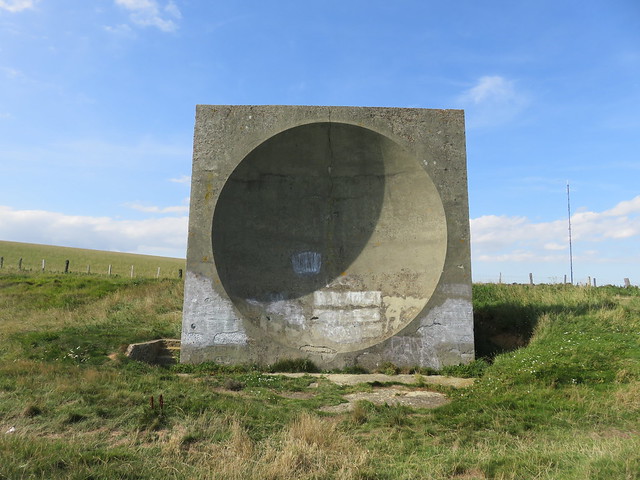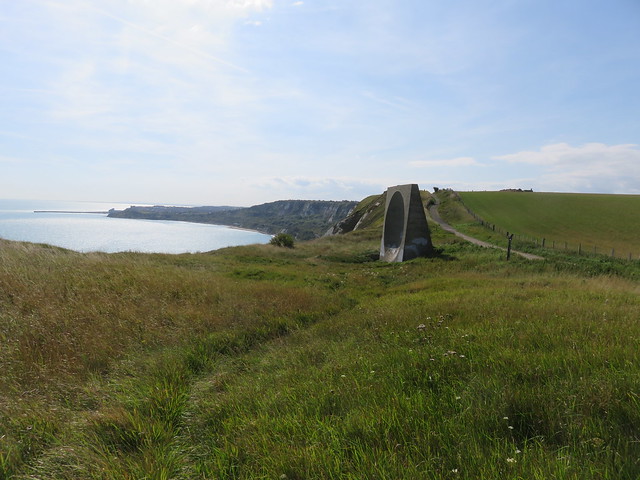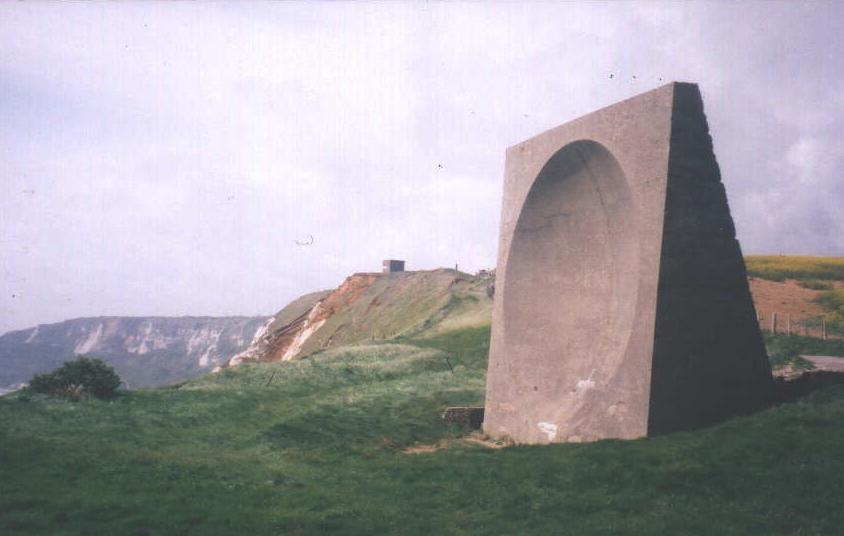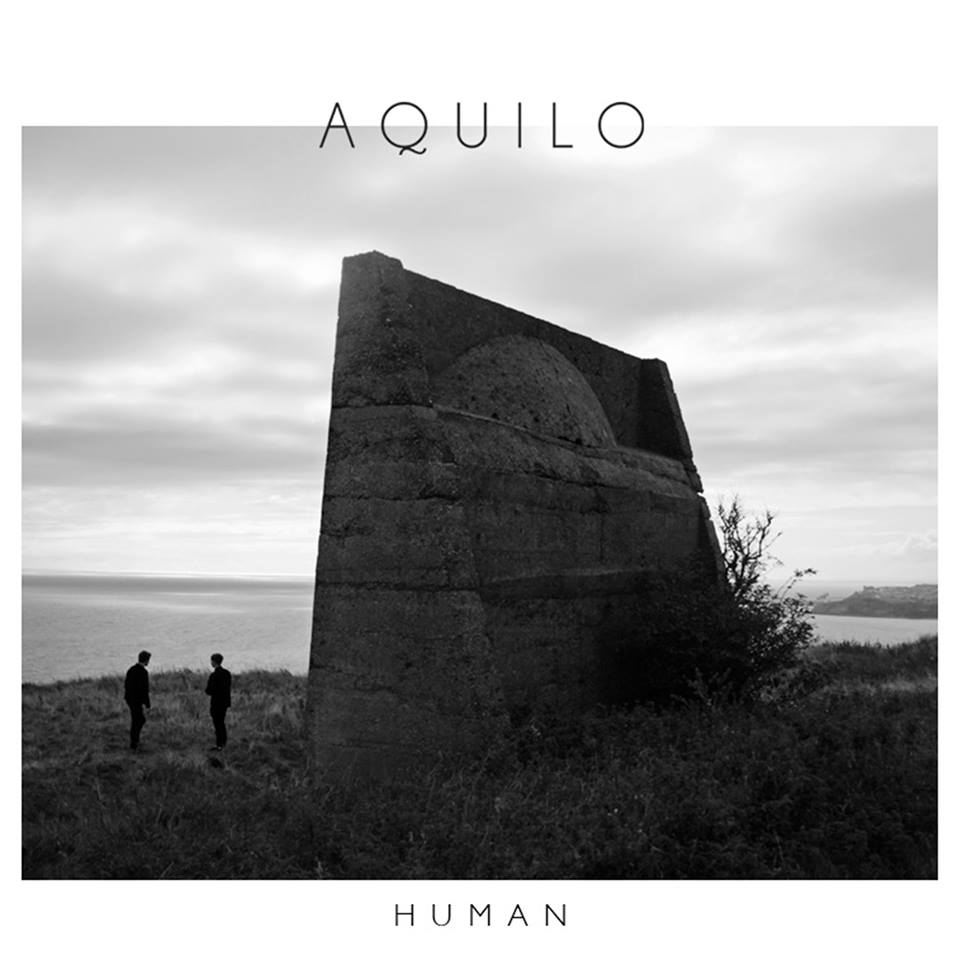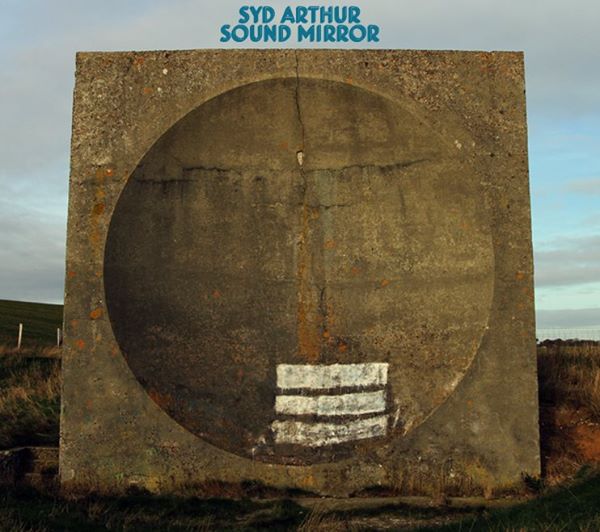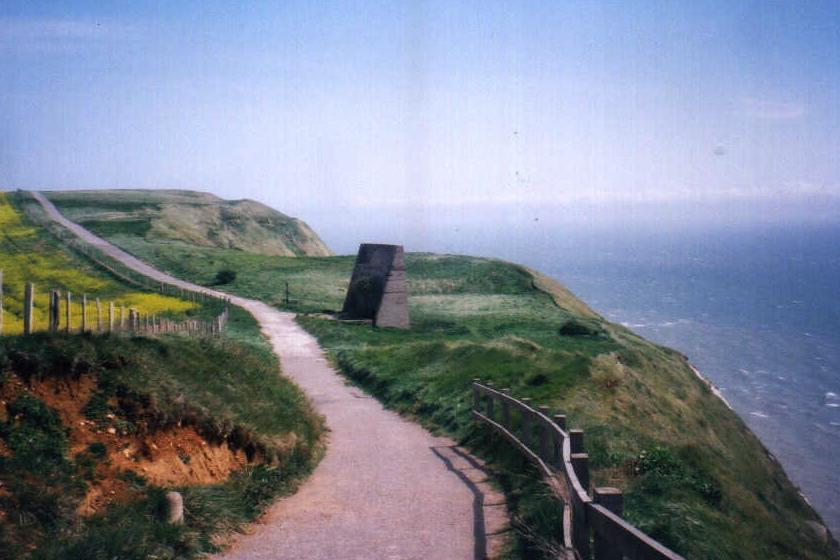A comparison of the 1941 watercolour painting “Bombing the Channel Ports” by war artist Eric Ravilious, and the same view of the Abbott’s Cliff sound mirror on 13 August 2017.

Bombing the Channel Ports © IWM (Art.IWM ART LD 1588)
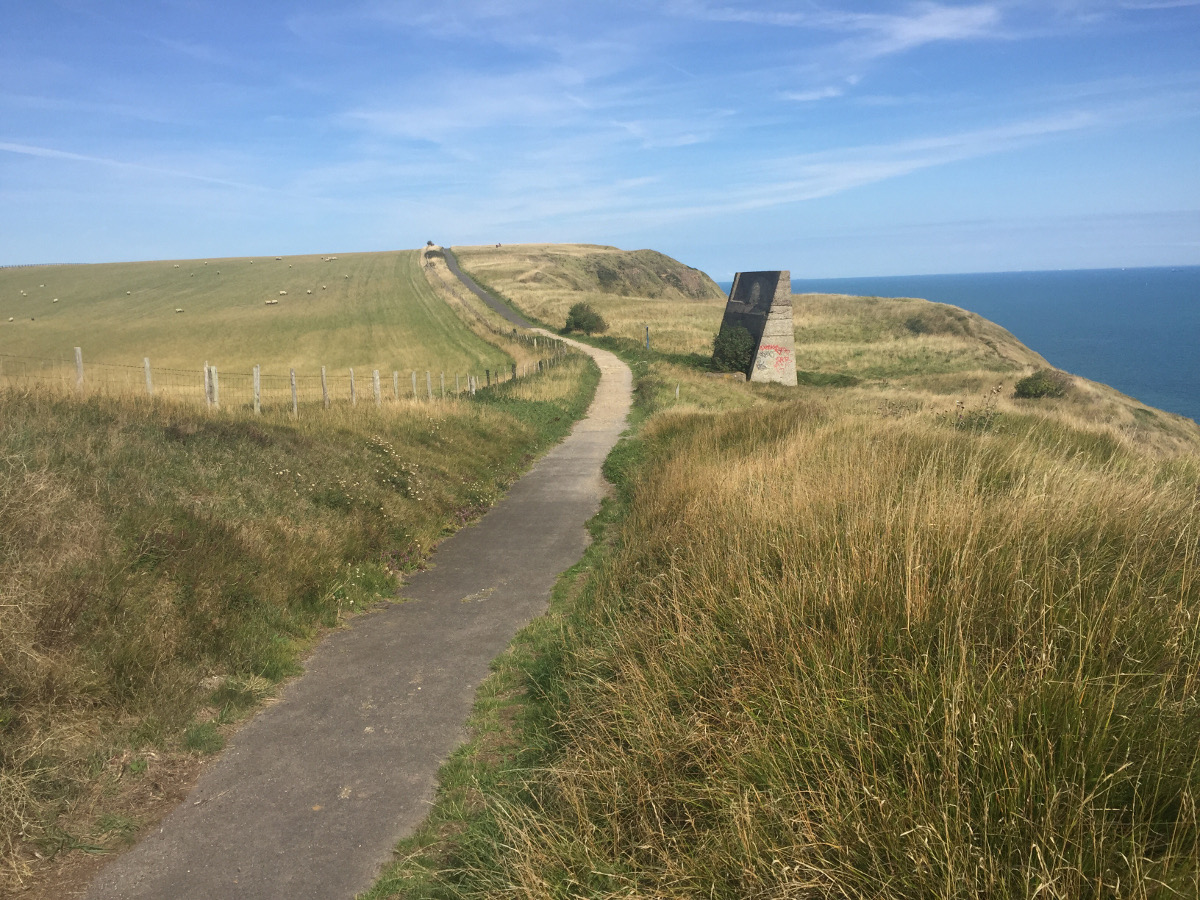
The painting is described by the Imperial War Museum as showing “a deserted coastal road that leads past an ‘acoustic mirror’ early warning device. In the top right of the composition there are searchlights beaming up into the sky, and a large circular glow of light to one side.”

